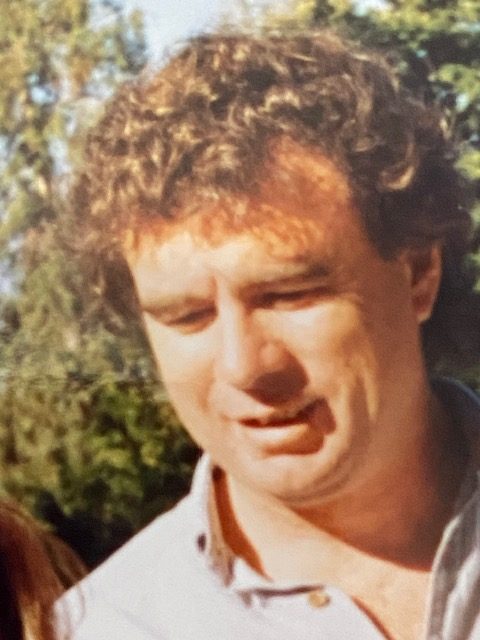
I have retired.
I thought I could never retire, but I have. I am still greatly interested in issues facing those who have to make decisions on our infrastructure but for Talking Infrastructure to continue and expand I have handed the reigns over to my younger board members and activists. They will now determine its future directions and I will watch with pride.
This does, however, free me up to turn my original website, amqi.com, created back in 1998, into something more than the redirection signpost it has been since creating Talking Infrastructure in 2016. With encouragement from our IT Director, Gregory Punshon, and our Lead Director, Ruth Wallsgrove, I am creating “Penny’s Place” on amqi.com which, when finished, will become an integral part of Talking Infrastructure. I will be unploading all 400 issues of Strategic Asset Management which were originally published between 1998 and 2014.
The SAM Issues are a great timeline of the issues and the practitioners who led the development of Asset Management over these years.
In addition, I am classifying the major articles, some 1200+ of them, to make your access easier. It is a big job and will take a few months but we will let you know when it is done.
You will be able to see what people were thinking when the practices we take for granted today were first established, why they did them and what they hoped to get out of them. You may even be able to determine where some may have gone off the rails and hopefully then be in a better position to course correct.
Of course, not all the issues we are dealing with today are old issues. Asset Management would be really boring if that were the case.
Its future history is in your hands.

From script by Lou Cripps
As infrastructure organisations start to make use of large language models (LLM) – popularly labelled artificial intelligent, though they are not actually thinking – do we know where we want them to take us?
Talking Infrastructure members are involved in some experimentation here. Blue Mountains City Council, for example, is trialling such technology to automate rural road inspections from LLM interpretation of videos of defects.
Lou Cripps is training models with curated Asset Management information. That is, instead of letting something like ChatGPT loose on all sources, weighting scripts to focus on known and reliable material like SAM newsletter articles. (Otherwise, they are biased towards financial AM, since there’s much more of that material around.)
As Talking Infrastructure looks at how such tools can help make good AM practice more accessible, and what principles we need when, not if, organisations try using LLM in decision processes such as where to schedule road maintenance:
What have you used so far? Where do you think we can make best use of LLM?

From script by Lou Cripps
Infrastructure schemes tend to suffer from optimism bias: assuming everything will work as planned.
Focusing on benefits and forgetting some costs is one reason infrastructure projects tend not to be as good as their business cases.
But there’s a parallel problem with risk and time.
Hofstadter’s Law: It always takes longer than you expect, even when you take into account Hofstadter’s Law.*
The UK TV programme Grand Designs comes to mind in relation to projects. It doesn’t seem to matter how many years the programme has been running, or the presumption that people who appear on it will have actually watched previous episodes.
In ambitious projects for houses, there seems to be a McCloud Law at work. People will always plan to be in by Christmas, unless they are expecting a baby (in which case they want to be in just before it is born).
In the UK, that means they are probably rushing to weatherproof the house in November, so they can get to work on the interior. And this in turn means they are invariably dependent on it not raining until the roof and windows are installed.
So the question is, is it likely to rain in the UK in November?
There is a technical corollary to this: that the glass for the windows will be delivered late, in any case. Apparently all builders know this.
*Coined by Douglas Hofstadter in his book Gödel, Escher, Bach: An Eternal Golden Braid (1979). McCloud after Grand Designs’ presenter Kevin McCloud.

This week my oldest and dearest friend, Bob Ritchie, the Secretary of the PAC, died after a valiant fight against Leukemia. I was able to see him just a few days before he passed on Tuesday last week. His influence on AM was immeasurable, but largely untold.
It was Bob who recognised, 40 years ago, the potential of the work I had done for predicting the likely cost and timing of water and sewer infrastructure renewal to be applied to all major state infrastructure and who convinced the Parliamentary Committee to engage me to do a research project where they had never done one before. He worked with me on all eight reports to Parliament and saw, where I did not, the opportunity of a vaguely defined job vacancy in public works to be converted to, as he put it, ‘anything I wanted’, which I interpreted as the opportunity to spread the AM message Australia-, and indeed, world-, wide.
A few years later he was my major support in developing the International AM Competitions and then again when I started Talking Infrastructure. He was always there, encouraging, supportive. So much he contributed! Yet hardly anyone in the AM community would know his name. True, he featured in ‘The Story of Asset Management‘ as he should, and I am glad I had the opportunity to say Thank You before he died.
Vale Bob Ritchie. 01.02.1942 – 11.03.2025

125348823 | Our History © Jakub Krechowicz | Dreamstime.com
More than a decade ago, Penny Burns set up an AM history group in LinkedIn. Her idea was firstly to collect people’s own stories, of how they came to be involved in Asset Management.
Last year Talking Infrastructure published Penny’s own history, of how she came to create Asset Management in 1984 and her first decade working with it. (The Story of Asset Management.)
From when AM really took off in the 1990s, it’s much harder to collect all the strands, and the stories include many other people. That’s why volume two of the history would look very different.
I am still fascinated by the personal journeys – not least because it brings out what distinguishes AM from other disciplines (why do people leave engineering, for example?)
I also have things when I teach about the wider history, but these really come from the people I have met, that I have happened to meet. And what I remember of what they said twenty or twenty five years ago, that they may not even agree with (or remember in the same way).
And the internet, even with AI, doesn’t cover most of it. We erase it when we rewrite a website, unless we consciously refer to what came before (or look up old sites in an archive project). I cannot find that old LinkedIn group, even though I don’t think anyone actually removed it.
Perhaps it’s natural that some only really think about history, and legacy, as they come to the end of their working lives. When you first meet a topic like Asset Management, you just know it’s there, not where it came from.
But it seems to me that asset managers ought to be interested, because we must have a good sense of time and change to do our jobs. “If you don’t know your history, you don’t know where you’re coming from,” as Bob Marley nearly put it. Understanding what’s happened before is the base material for having any sense of what may happen next, in ideas as well as deterioration curves.
Volume 2 is not yet a project. But Talking Infrastructure is planning longer articles on key topics such as planning and risk, and how to mine SAM newsletter material. Not the final word on anything, probably, but the next word, or part of the picture. A resource that can help us remember.
Watch this site for some more notes on our collective history.
And share your own story and memories of how it evolved for you.

From script by Lou Cripps
The lifecycle-based Asset Management Plan was Penny’s solution to the issue of short-term thinking.
In particular, she wanted us all to look ahead at budget requirements for renewals – replacements and refurbishments of aging assets.
But planning and lifecycle thinking are needed for other challenges, too.
For me, the fundamental point is the importance of thinking ahead. Of being proactive rather than reactive, of exploiting what we already know about our assets to stop being surprised by things we can work out ahead of time.
In a week when many of us are trying not to think about WW3, we know we don’t know everything about the future. But we need to make better use of what we do know.
The problem, 40 years on, is that so many organisations don’t.
Here are just some of the questions I would wish – fairy godmother style – everyone to be able to give better answers to.
- 101, if we think we need to build some new infrastructure asset, what will it cost to maintain and operate it?
- What are the different realistic solution options – and what opportunities will we lose in choosing any of them?
- What’s the evidence that we have understood the problem and scoped our preferred option correctly? What else has to be considered in with the capital cost – like the cost of new facilities when we buy new electric fleet, for example?
- What costs and disbenefits should we also cost into the materials we choose, such as embodied carbon or damage to other communities?
- What costs and disbenefits will continue long after the physical asset is gone (think the loss of species or habitats, long-term damage to communities)?
- Do we really have any fact basis for the costs, risks and benefits of something new, as opposed to sustaining what we have?
All of these are elements of whole life cost modelling. Too bad many organisations still don’t even use basic lifecycle costs for their budgeting or strategies.
The underlying problem… is a system that doesn’t plan for the future. Is it lack of the right skills in the right place, or vested interests? Laziness??
One thing I am pretty sure is that it isn’t a lack of available information.
What do you think: just how bad, on a scale of 1 to 10, are our current infrastructure business cases?
Further good reading: Penny’s Infrastructure: we can afford to buy it, can we afford to keep it? Louise Hart, Procuring Successful Mega-Projects: How to Establish Major Government Contracts Without Ending up in Court. Joseph Berechman, The Infrastructure We Ride On: Decision Making in Transportation Investment.

Recent Comments